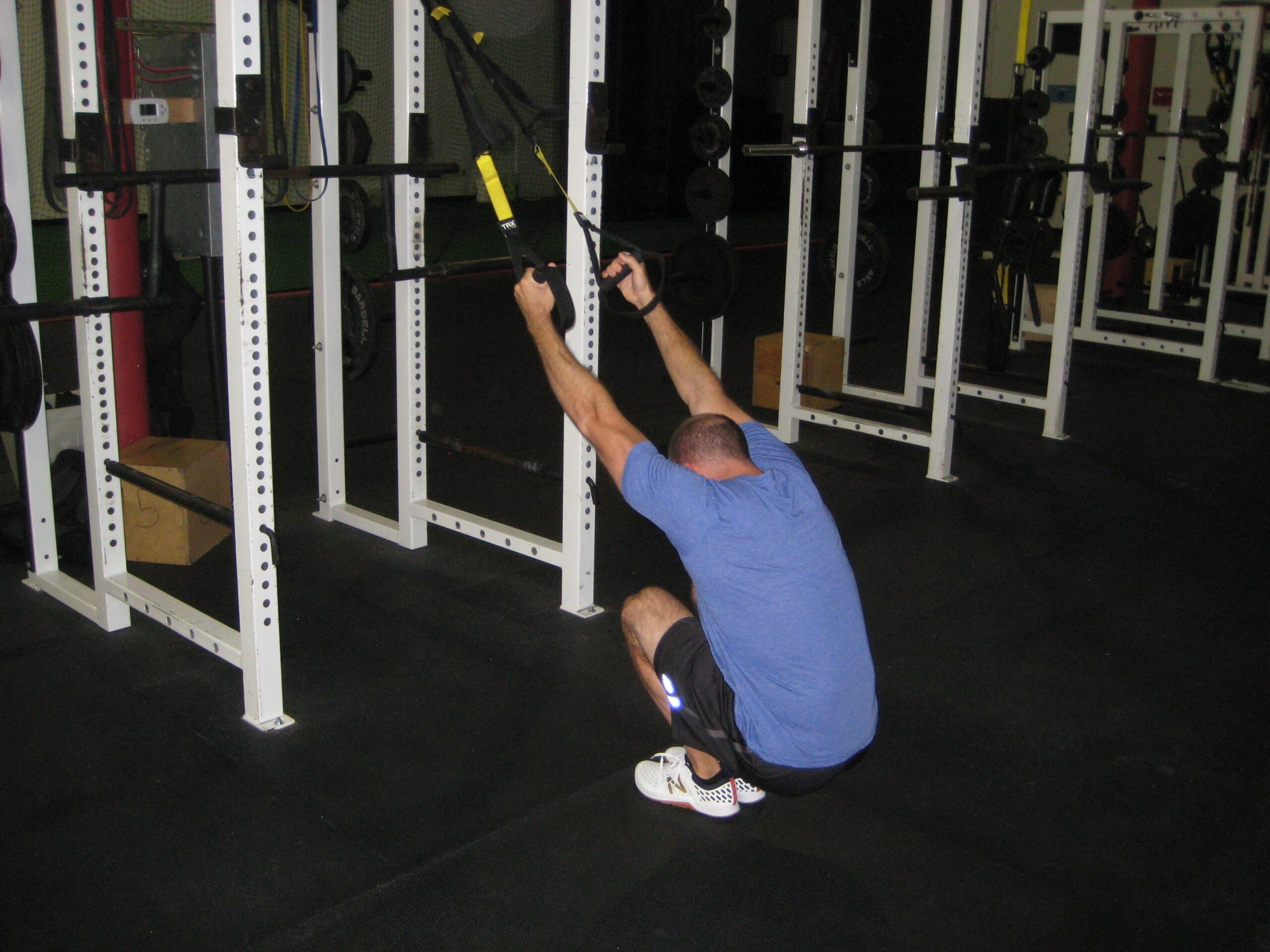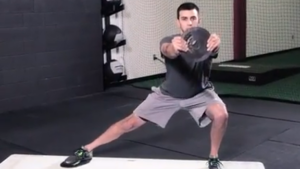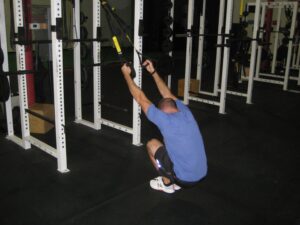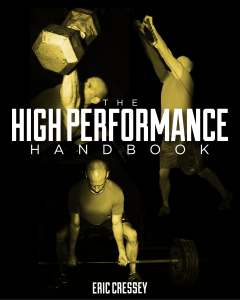
10 Tips for Making Mobility Work with Your Schedule
I received the following inquiry via email the other day, and thought it might make for a good Q&A post:
I’ve come to the unfortunate realization that 15 years of sitting at a desk – combined with the simple fact that I’m almost 40 – have left me severely lacking in mobility. And, it’s something I now want (and need) to really address. However, I’m also a realist and know that with a busy work and family schedule, getting to the gym is hard enough – but adding a lot of mobility work on top of that could be really challenging. So, I’m wondering what the best way to efficiently tackle this problem is? Should I do a little bit each day? Is it better to go to a yoga class 1-2 times per week? Or something else? I’d like to make some positive changes, but ideally without completely overhauling my weekly schedule. Thanks for any direction you can provide.
The short answer to this question would be a blunt one:
If it’s really important, make time instead of finding time.
That wouldn’t make for much of an educational blog, though, so let’s explore this in more detail. Here are ten things I’d consider if you’d like to really dedicate yourself to improving your overall mobility as efficiently as possible.
1. Frequency is everything.
Remember that – simply stated – mobility is your ability to reach a certain position or posture. It’s different than flexibility in that mobility necessitates stability within a range of motion, not just the range of motion of a joint (or series of joints). In other words, you need motor control to have motor control.
Think back to when you were learning to ride a bike. Did you go out and try for 5-6 hours every Saturday morning, or did you put in several runs every day for a few weeks? If you’re like most people, it was definitely the latter option.
[bctt tweet=”Frequent exposure is key for motor learning, and you can’t improve mobility without motor control.”]
What does that mean in the context of mobility work? You need to do something every day – and possibly even multiple times per day.
For most folks, a quality pre-training warm-up is an important first step. If you look at my High Performance Handbook as an example, each pre-training warm-up consists of about five minutes of foam rolling and ten mobility drills that should take about ten minutes total.
2. Find new planes and ranges of motion in your strength work.
Most training programs are very sagittal plane (front-to-back) dominant. In other words, a lot of exercisers do very little in the rotational (transverse) and side-to-side (frontal). While you do have to do work in these planes during single-leg work, that doesn’t mean much for actually taking them close to their end-range of mobility. Simply adding in some lateral lunges to your warm-ups and strength work can go a long way.

If you’re looking for more examples, check out this detailed article of mine: 7 Ways to Get Strong Outside the Sagittal Plane.
3. Sign up for classes if you really need the accountability or the instructor is absolutely fantastic.
Yoga and Pilates can be absolutely fantastic tools for helping you to improve your mobility if:
a) They improve your accountability so that you’re more likely to actually make this a priority.
b) You have an outstanding instructor that both motivates you and teaches you about how your body works.
These options can also be terrible approaches if you have unqualified instructors or attending them absolutely destroys your schedule – and therefore becomes a burden more than a blessing.
4. Mix in a little work at night before bed.
This piggybacks on the aforementioned “frequent exposures” theme. I know of a lot of people who’ll do a bit of foam rolling and stretching at night while watching TV or getting ready for bed. Anecdotally, it does seem to help some people unwind – possibly by kicking the parasympathetic nervous system on (especially if combined with a good focus on breathing during this work). If getting in some stretching and rolling before bed doesn’t exactly thrill you, just pick 1-2 high priority drills and do them. Or just stretch out your calves while you’re brushing your teeth!
5. Break up prolonged periods of immobility.
Each spring, I drive from Florida to Massachusetts. Then, in the fall, I drive back to Florida. It’s a lovely 23 hours in the car over two days.
The first time I did it, I tried to be a cowboy and just plow through it with as few stops as possible. My hips hated me for about three days after the trip was done.
Since then, I make sure to stop every 2-3 hours. In fact, on my ride back this spring, I even stopped twice to train along this journey. I felt dramatically better in the days that followed.
I think you can extend this logic to how we break up our days, too. If you have to be at a computer for the majority of the 9am-5pm work day, try to get up and move around every 20-30 minutes. Walk to get some water, or do a doorway pec stretch.

It’s a lot easier to do a little to maintain your mobility than it is to lose it and try to get it back.
6. Incorporate a bit more unilateral work.
When you take a lifter who’s never done much single-leg work and start incorporating these unilateral movements, good things always seem to happen. I suspect that it has to do with the fact that a lot of these individuals are actually extending their hips past neutral for the first time in years, but I doubt that’s the only mechanism.
To be clear, this doesn’t mean that the hardcore squat/deadlift enthusiasts need to drop (or even tone down) these movements. It just means that it’d be a good idea to work in some more single-leg drills to the warm-up period, and to do some as an assistance exercise. They don’t need to be loaded like crazy, either, particularly early-on. It’s not uncommon to see groin strains (or very pronounced soreness) when someone incorporates single-leg work to a previously 100% bilateral program, so incorporate them gradually in terms of loading and volume.
7. Be patient and don’t skip steps.
Getting transient (quick) improvements to range of motion isn’t particularly difficult. You can get that from manual therapy, increased body temperature, or “tricks” to the nervous system. After these initiatives, we need to incorporate some stability training to make these changes “stick.”
They won’t magically improve dramatically from one session to the next, though. In fact, you may only hold 5% of that change from one session to the next – and that’s why you need to stay patient and persistent with these drills over an extended period of time to see pronounced results.
With that said, it’s important not to skip steps in this process. Just because your squat pattern improved a little doesn’t mean you’re ready to sink a 500-pound front squat to the “butt-to-heels” position the right way. And, just because you experienced subtle improvements to your active straight leg raise doesn’t mean that you’re ready to run a sub-10-second 100m dash. Own the changes before you try to challenge them in more chaotic environments.
8. Manage your breathing.
We’ll keep this one really simple and watered-down:
Inhale = tension = stress
Exhale = relaxation = destress
If you’re holding your breath while doing your mobility drills, stop! You’re just stretching your lats, not attempting a 700-pound deadlift. Control your breathing, and think about fully exhaling at the lengthened position to give your system a chance to perceive it as a “new normal.” The yoga folks have been preaching this for thousands of years, but us meathead strength and conditioning coaches have only started to figure it out in the past decade or so.
One drill I love for teaching this is the TRX deep squat breathing with lat stretch. Just sink down into this bottom position and exhale fully on each breath. Give it a “two-one-thousand” count before inhaling again. I usually program five breaths per set.

9. Choose comprehensive mobility drills.
If you only have 10 minutes per day to devote to improving your mobility, you are best of focusing on drills that provide plenty of bang for your buck. In other words, you want drills that challenge multiple joints and planes of motion at the same time. Here are a few good options as examples:
10. Balanced programming and optimal technique help to improve mobility.
Sometimes, the best thing you can do is “audit” your programs and training technique to see if they’re pushing you further into your mobility deficit. Maybe you’re benching too much and rowing too little? Or, perhaps it’s been a lot of squatting and not enough deadlifting? Could it possibly be that you’ve been board pressing a ton and omitting full range-of-motion benching that could actually be really helpful for your shoulder? There are countless programming pitfalls into which one can fall, but you’ll never identify them until you take a step back to review what you’ve been doing.
Moreover, crappy technique under load reinforces bad patterns and loss of mobility. Additionally, it can turn soft tissue and neuromuscular control restrictions into joint restrictions (laying down bone that shouldn’t be there). You can’t just fix reactive changes to the joint with stretching, either. Train hard, but train smart and with solid technique.
Wrap-up
These are only ten thoughts off the top of my head, and there are surely many more. At the end of the day, though, most of the mobility improving strategies come back to common sense. Your body desperately wants to move, and you need to make time for that movement – and approach it with a plan as you would any other priority in your life.



